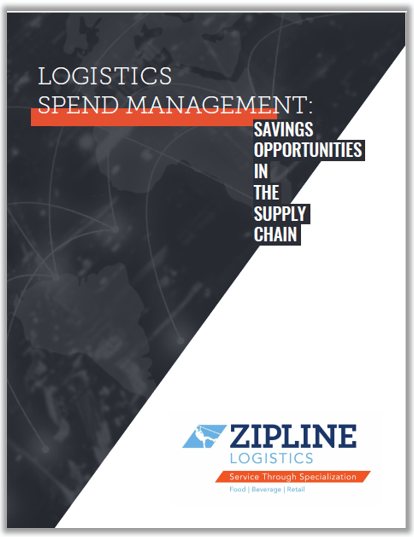Less-Than-Truckload (LTL) has a reputation for being an expensive and slow shipping option, but it’s a mode that provides a lot of flexibility for shippers when used correctly. The key is understanding how LTL tariffs and LTL freight rates work and how the carriers operate – then using that knowledge to your advantage.
LTL rate pricing agreements start with the basics of weight and distance but get more complicated with considerations surrounding the type of product being carried, its density, and discounts offered by the service provider.
Additionally, there are carriers with “common authority” and “contact authority.” Each operates differently and are appropriate for different circumstances.
- Common Carrier – carriers that provide for-hire transportation to the public. Any business or individual can reach out and request their services. This is the type of LTL carrier whose pricing this blog post references.
- Contract Carriers – carriers that provide for-hire transportation to specific individual shippers, based on contracts. Contracted negotiations cover standing loads and regular lanes and are not calculated on a per-shipment basis.
Here’s a breakdown of important factors that go into determining the freight rates for common carrier LTL shipments:
LTL Shipping Rates
Distance: Like most forms of transportation, how far a shipment must travel is always a primary driver of cost. More distance equals more effort in terms of labor, equipment, fuel, etc.
Weight: In a typical common carrier LTL pricing agreement, carriers publish base rates that charge per hundred pounds and are adjusted according to origin and destination. This calculation is often called centum weight or hundredweight (CWT).
Common LTL carriers will offer discounts for heavier freight – often referred to as “weight breaks.” With knowledge of how base rates and tariff tables work, a shipper can work to change up its order sizes or pallet configurations to achieve weight breaks. For example, using the below chart, moving up from 480lbs to 520lbs would reduce the cost per pallet price nearly 50%.

SHIPPERS, BE SURE TO PROVIDE TO CARRIERS/3PLs:
- Origin address and zip code
- Delivery address and zip code
- Receiver name and contact information
- Total weight of the shipment, on the pallet
- Total number of pallets
LTL Freight Classification
Dimensions: Since LTL shipments are moved with multiple other orders, pricing is partially based on how much space the freight takes up. It’s imperative that proper dimensions are provided on a bill of lading. LTL carriers have laser technologies available that can determine exact measurements. Inaccurate or incomplete information will not go undetected. Instead, it will only cause extra work for a carrier which will be charged back to the shipper as a fee.
Class: Since all products are not the same, the value and density of the product also contribute to carrier pricing. The National Motor Freight Classification (NMFC) is a standard that puts freight into 18 different groupings, numbered 50 to 500. Classification metrics look at density, handling, stowability and liability to establish a commodity’s “transportability.”
This is a pain point for many of our snack food customers. If just looking at weight, a light and airy product would cost less to ship. However, for the carrier, these orders take up a disproportionate amount of space on a truck, often aren’t stackable, and can be easily damaged, therefore costing them more than a heavier shipment with the same dimensions. A shipment’s class is designed to compensate for these types of variations.
As a rule, the more details you can provide with your shipments, the better and more accurate pricing you will receive. This is especially true with LTL. Explaining your commodity in detail will prevent against retrospective billing.
For example, if shipping individual bags of pre-popped popcorn, you need to specify beyond just “popcorn” on your bill of lading. Unpopped kernels will ship at a class of 85, while the class of pre-popped and packaged popcorn bags will be determined by weight and density specifications – not all bags are the same.
Freight All Kinds (FAK): When a brand ships goods that span multiple freight classes, they often can establish an agreement with carriers that enables them to move all products under a singular freight class. This cuts down on necessary paperwork and provides significant savings. For example, a customer that ships multiple commodities ranging in class from 85 to 300 could negotiate a FAK in their tariff to rate all the items at a FAK 175.
SHIPPERS, BE SURE TO PROVIDE TO CARRIERS/3PLs:
- Shipment dimensions, on the pallet (L x W x H)
- Details on whether the pallets can be stacked, or if dunnage is necessary
- Type of goods being shipped
- Freight class
Other LTL Rate Variables
Service: The transit time required for a shipment will affect the cost. Most LTL carriers have networks built to operate on certain schedules and transit times, and their pricing agreements will be based on these standard delivery days. That said, most will also provide expedited service – but at an additional cost that is quoted on a one-off basis.
Accessorials: Beyond calculating a base rate that accounts for weight, distance, class, and transit time, LTL shipping is always done at the risk of other things coming up that will impact the cost of an individual shipment. Unexpected delivery requirements – like a consignee requiring special equipment (e.g. lift gate), a driver assist, waiting time, or an address correction can show up as additional line-item costs on an LTL invoice. Some of these accessorials can be negotiated away within an agreement or can be prevented against by providing as much information as possible upfront.
SHIPPERS, BE SURE TO PROVIDE TO CARRIERS/3PLs:
- Any packaging specifications
- Any handling specifications
- Any special instructions for locations or product
Discounts: Common LTL carriers offer shippers a discount percentage off base rate tables as an incentive for more business. Discounts are always negotiated and are account-specific, but 3PLs can achieve higher discounts than individual manufacturers because they have significantly more freight volume to work with. For a small- to mid-sized CPG brand, this reason alone can make shipping with a broker or logistics partner more advantageous and cheaper than self-management of their LTL orders.
Minimums: All LTL providers have “absolute minimum charges” (AMC) – the minimum price a carrier will not go below, regardless of applied discounts. These minimums can often be negotiated but exist to protect the carrier.
—
Understanding each of the factors that go into LTL pricing will help any company better manage its logistics spend, as well as provide leverage when negotiating pricing agreements with carriers.
Do you need assistance with managing LTL freight, or want to quote an order?
Contact Zipline Logistics Today
—
See other parts of this series where we share what goes into quoting different modes of transportation; Truckload, Intermodal.
 | Logistics Spend Management: Savings Opportunities in the Supply Chain Looking to reduce your transportation spend? Check out our eBook for advice on how to identify untapped logistics savings opportunities. |

